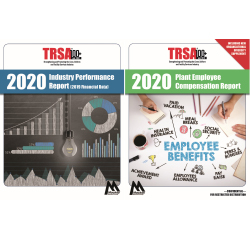Home renovation companies have different ways of doing their jobs. As a result, they also have various options to charge their customers for their expenses.
Although many contractors can do their job excellently, some of them are unfortunately not paid on time.
Billing your projects: How to keep the money going
Everyone knows how difficult it can be to deal with slow-paying customers. As a reliable contractor, you may have enough in your account to cover the cost of different projects. In an ideal world, customers have the initiative to meet the agreed timeframe without the need for follow-up action. That's just not how things work in real life. Therefore, you need to make extra efforts to ensure that billing renovation projects doesn't cause a headache. If you're currently trying to improve your payment system to minimize the need for customer follow-ups, here are six tips to help you optimize the whole process:
Organize your billing methods
The timely receipt of payments primarily depends on how well your internal processes are organized. Therefore, it is necessary to list all important billing information so that you can work with something before you set your rules. This ensures that all parts of the process run smoothly.
Here is a list of the settings you need to make for your customers:
- Prices
- Billing method (paper or electronic)
- Billing frequency (weekly, monthly or after project completion)
- Due Date
- Payment method options
- Late fees
Once you've found out this information, it's now easy to standardize it. You just have to make them available to your customers. Of course, this only serves as a guide. You may need to adjust some factors depending on your customer's needs and the nature of the project.
Emphasize important information on the invoice
After you have a regular schedule for sending invoices, you need to make sure that the customer can easily see the important details, including the following:
- Date of invoice
- bill number
- Name and contact details of the contractor
- Name and contact details of the customer
- Billing Information
- Detailed breakdown of services
- Fees or prices
- Total amount
Before you start the project, it is helpful to translate your transparency into a written contract with the fees. This ensures that you have a document that confirms that everything has been agreed in advance.
Use an appropriate invoice template
Although you already know what an invoice should contain, it is recommended that you use a fee template that clearly shows all of the required information. You may find generic templates that do the job, but each industry bills its customers differently. For example, what may work for electrical work may not be as effective for flooring projects.
Keep invoice items understandable and customer friendly
When billing, it is important to be detailed. However, the number of details included should depend on the project and the customer. Ultimately, a customer only needs to know what he is being charged for. Therefore, make sure that you minimize writing in technical language or codes, as this can only confuse your customers. If you really need to write it, always include the “translation” or term that the customer is familiar with.
Use the power of discounts and penalties
One of the reasons why customers aren't motivated to pay on time is because there is no impact on late payments. You feel like you can get away with it. If you have penalties for late payments, they will do everything to pay on time. If you have early payment discounts, they will be used to take advantage of them.
Be proactive in getting payment fees
If your customer has no initiative to pay for themselves, it's your job to proactively search for their fees. Your demands don't just pay off by waiting. Set up a follow-up process so customers don't forget their responsibilities.
Payment becomes easier if you have a consistent billing process
Renovation projects are often time consuming and labor intensive. Ideally, contractors should be able to get their work done once the project is complete. However, some contractors do not receive timely payments because their billing processes are not set up properly. For this reason, it is important to assess why late payments are usually made in the first place. Once you've set up a process that is easy for both you and your customers to understand, you will soon see significant improvements in your company's cash flow.




